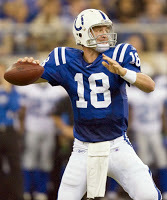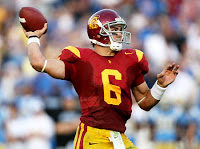
BY TRENT DILFER, NFL All-Pro QB, ESPN NFL Analyst
The best metric for quarterbacks is load to arrival (LTA) because it is the best practical representation of their “arm strength”, but more importantly their mechanics. The event begins just after ball carriage, which occurs during drop back phase, and ends at the arrival at the target. There are 2 major paths that improve LTA; a level head and sequencing.
Perhaps the most common attribute preached for QBs is footwork, generally by using the speed ladder or another device that simultaneous works foot speed with ball carriage. The initial rationale is correct because everything begins from the ground up.
However, the real goal of these drills should not be foot speed, but rather keeping a level head from the first step to the actual throw. Such positioning not only allows a more consistent release point, but a level head prevents the up and down wasted motion that can add more time onto your LTA.
Joe Montana is one of the only successful QBs that used a narrow stance. After his drop back, he would actually jump forward again to throw. The rhythm of this technique is very hard to time precisely, especially during broken plays. Therefore, the more modern quarterbacks (Tom Brady, Payton Manning) have been successful in a stance of “exaggerated width” that engages more shuffling rather than hopping.
The end result should be a quarterback that has balance, base, and load.
Because LTA begins when the hands separate after carriage, a key aspect is limiting the arc of the arm. This cue is also one of the major differentiating factors from other overhead sports, such as baseball pitchers. The arms should move from a horizontal L to a vertical L as shown below. A crucial part of this transfer is the leverage developed by cocking the throwing wrist by about 15 degrees.
Horizontal L

Vertical L

Similar to all rotational sports (golf, baseball, quarterbacks), to initiate the throw, the back hip must fire forward to initiate the throw in the desired direction. The wrist then maintains this leverage as the arm moves forward, with the elbow leading to create a lag in the rotation like a whip. The last segment to finish is the wrist.